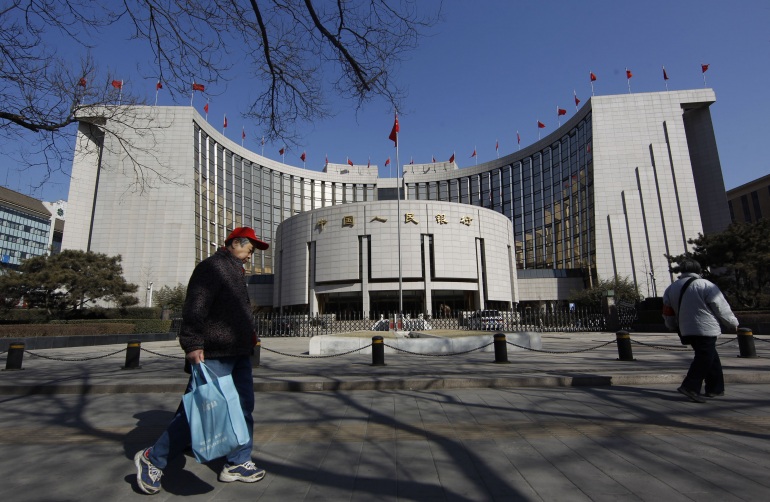Risky business for China's private banks

A Chinese man walks in front of China's Central bank in Beijing on March 12, 2012 (AP Photo/ Vincent Thian)
The China Banking Regulatory Commission’s recent announcement that it would allow the creation of three to five private banks in 2014 is a positive yet cautious step toward financial reform.
It is positive because the majority of loans under the almost entirely state-backed banking system continue to fund state-owned enterprises, leaving a clear and widespread demand for institutions that can serve smaller and private entities. The move is also a step in the right direction in terms of incentivising institutions to meet market demand, since private banks, answering to private shareholders, are expected to be profitable, or at least not generate an excess of non-performing loans.
But the move is also cautious. There are many individuals and corporations that would gladly choose a bank loan over financing in the informal curb market - where private money lenders often charge high interest rates - but cannot obtain it, and three to five banks won’t be enough to satisfy demand. There are many Chinese entities interested in setting up private banks that are unable to secure permission from the central government to begin operations. In the face of the immense market pressures for additional funding, the creation of merely a handful of banks is quite conservative.
Since 1979, the central government has almost always been cautious in opening up its financial sector. Whether this has been justified is not clear, since there are few examples to work from. One that justifies caution is Minsheng Bank, which is one of two private banks in China and is systemically important. The bank has been seeking better profitability in recent years, inducing it to take on what some critics call an excessive involvement in the sale of wealth management products. These products - of which the ultimate debtors are technically bank customers, but in practice may, over time, turn out to be the banks themselves - have been increasingly based on risky income streams from trust loans and other questionable assets. Minsheng may be left either with a poor reputation or an exhaustion of capital if these risky products go sour.
This simply demonstrates that one of the issues that private banks face in China is generating profits long-term under a relatively constrained financial market.
First, China’s lending markets are fairly homogenous, and diversity can reduce reliance on one type of lending. Consumption demand is still far lower than that in developed countries - arguably too low to create the types of consumer loan markets present in the US and Europe. Certainly, growth in this area is possible, but to generate demand, the economy must experience a steady increase in economic growth, which appears unlikely in the short to medium run.
Second, as banks in the US and other developed nations have experienced over the years, reliance on the traditional banking model that achieves profit from the lending-deposit rate spread does not always assure profitability, particularly in economic downturns. Over the years, Western banks have generated additional revenue through charging service fees and through both dealing and investing in other types of financial products (some of which have been more stable than others). If Minsheng Bank is taking on excessive risk, perhaps it is because there is a need to generate more profitable avenues for banks.
All of this is not to say that setting up private banks in China right now is a bad idea. As with any new financial institutions, the private banks will have to be watched closely to ensure that they properly control for risk while maintaining profitability. Although those bestowed with the opportunity to open a private bank this year may be widely envied, keep in mind that Chinese financial entities without clear government guarantees (for example trust companies or private lenders) walk a fine line between profitability and risk. An institution that is up today may be down and out tomorrow. This is simply the nature of China’s diverse, segmented and opaque financial system that has both dazzled and frustrated market participants the world over.
Rather than worrying about these incremental steps toward financial reform, financial analysts should urge the Chinese leadership to install proper institutions to control for risks, including better consumer and institutional credit rating institutions, more transparent channels for transmitting information to both borrowers and lenders, and improved accounting and auditing systems. Then, when these risk constraints are in place, the government can increase the pace of reform without worrying whether each reform represents a peril or a promise. Private banks, with risks in check, would have more resources with which to pursue profits, and the central government would have more energy to open up profitable opportunities. A win-win situation, it would seem.
Sara Hsu is Assistant Professor of Economics at the State University of New York at New Paltz.
This article first appeared on East Asia Forum. Republished with permission.













